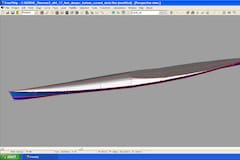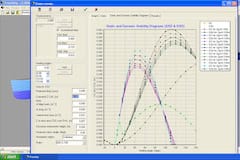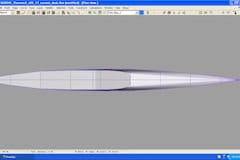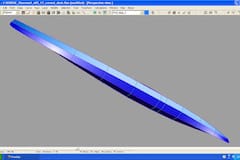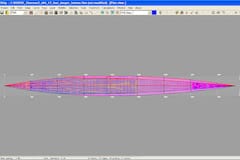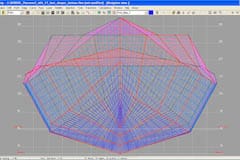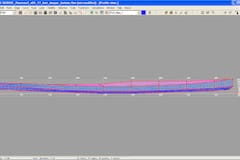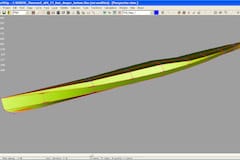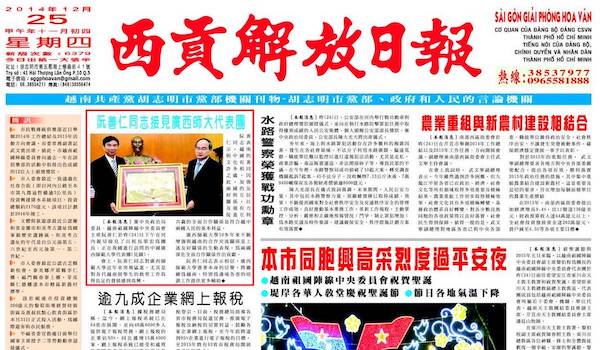Until this second design, I’ve been able to “read through” the hull designing parameters: Cp, Cb, Cm, Kmt, S, LCB, LCF, etc… interpret them correctly and know quite well what they do mean in real – world boat characteristics and performance. Many days out there paddling in various conditions and many hours spent on the whiteboard (a.k.a the Free!Ship software) make me feel very confident with my designing process.
The hull is shortened to 17 feet, reducing wetted surface area, but with minimum rockers, the waterline length is unchanged, also the designed – displacement is slightly increased to 120 kg, as 110 kg of maximum load is a bit under desire as pointed out in my last 9 days trip. Beam is slightly reduced from 45 cm to 44 cm, but both primary and secondary stabilities is significantly improved. I feel very pleased with this design so far!
Unlike my previous boat, the new one would have a curved deck. It is more difficult to build a round, curved deck, it is also harder to build hatches, compass cup, bungee cord anchor points and other parts… onto it. But with a curved deck, the boat will look nicer, less windage, and weigh less overall. Looking from above, it shapes exactly like a bullet, should I engrave a motto onto it: built like a gun, runs like a bullet
!? 😀
The most important design decision is to increase the amount of deadrise. In my experiences with Serene – 1, the kayak has excellent sea – keeping abilities in rough conditions, something I didn’t feel with all my previous boats (e.g: the Hello World -3, which has a much flatter bottom). I would attribute that ability to the deeper V – hull, which offers quite a low primary stability, but should let you at ease in waves & turbulences.

